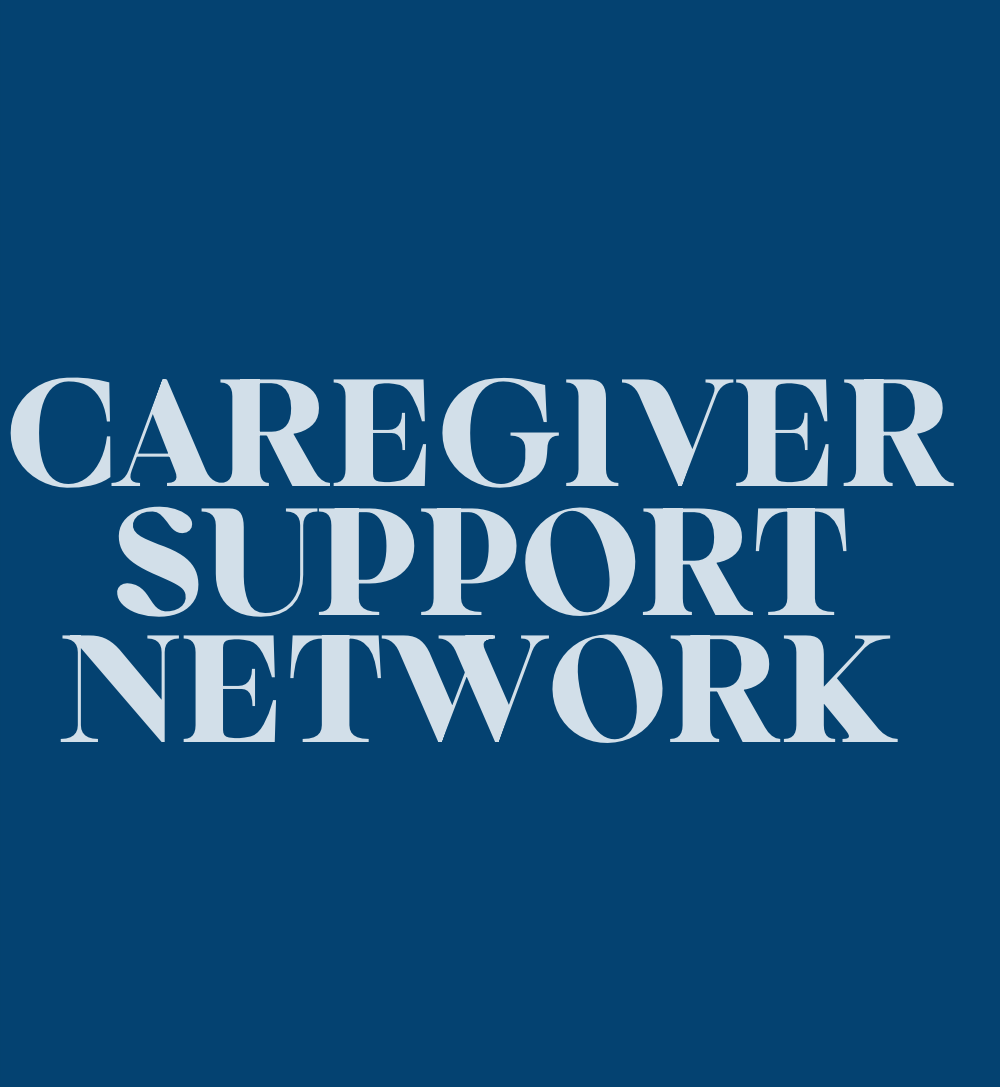Stroke Recovery
Cerebellum Stroke Recovery Time: A Step-by-Step Guide
Lingering mysteries surround the diverse paths of cerebellum stroke recovery, hinting at unforeseen challenges and remarkable transformations waiting to be unveiled.

When talking about the timeline for recovering from a cerebellum stroke, it is important to acknowledge the different paths of recovery that individuals may experience.
For instance, I recently came across a case where a patient made remarkable progress within the first few months post-stroke, only to face unexpected challenges later on.
Understanding the nuances of recovery duration and the pivotal role of ongoing support and therapy is crucial for a comprehensive rehabilitation journey.
Stay tuned to unravel the complexities and factors that influence the recovery timeline after a cerebellum stroke.
Key Takeaways
- Early dedicated rehabilitation crucial for rapid improvement post-cerebellum stroke
- Customized programs and ongoing therapy vital for sustained recovery progress
- Lack of consistent home therapy beyond 6 months can hinder recovery
- Continued commitment to rehabilitation enhances long-term recovery outcomes
Recovery Timeline After Cerebellum Stroke
Recovery following a cerebellum stroke typically demonstrates rapid improvement within the initial 3-6 months, driven by heightened neuroplasticity. During this crucial period, individuals often experience significant gains in motor function and coordination. Consistent and tailored rehabilitation programs are vital during this phase to maximize recovery outcomes. However, it's essential to note that lack of ongoing home therapy beyond 6 months can lead to plateaus or even regressions in the recovery process. Therefore, dedication to rehabilitation should be sustained even after the initial 6-month period post-cerebellum stroke.
Optimizing recovery after a cerebellum stroke involves customized rehabilitation strategies that cater to individual needs. These programs often emphasize high-repetition exercises to stimulate neuroplasticity and facilitate continued progress. While the initial 3-6 months post-stroke are marked by rapid advancements, ongoing effort and commitment to rehabilitation can yield improvements beyond this timeframe. By adhering to a structured rehabilitation timeline and incorporating consistent home therapy, individuals can enhance their chances of sustained recovery and improved quality of life.
Factors Influencing Recovery Duration

Factors impacting the duration of recuperation post a cerebellar stroke encompass the intensity and consistency of rehabilitation efforts undertaken by the individual.
After an ischemic cerebellar stroke, the recovery duration can vary significantly, with early neuroplasticity leading to rapid improvement within the first 3-6 months.
It's crucial to maintain ongoing personalized rehabilitation programs involving physical therapy, occupational therapy, and speech therapy to optimize recovery time.
Lack of continued dedication to home therapy beyond 6 months post-stroke can hinder progress, potentially causing plateaus or regressions in recovery.
Utilizing tools like FitMi for interactive home therapy can enhance repetition, motivation, and speed of improvement during the recovery period.
Therefore, individuals recovering from a cerebellar stroke should prioritize consistent and intense rehabilitation efforts, including personalized programs and home therapy, to facilitate a more efficient and effective recovery journey.
Expected Recovery Milestones
Upon experiencing a cerebellar stroke, individuals can anticipate a progression of specific milestones indicative of recovery. Enhanced neuroplasticity typically leads to rapid improvement during the initial 3-6 months post-stroke, highlighting the critical nature of this period for progress. Consistent engagement in rehabilitation and therapy is paramount during this time to capitalize on the brain's ability to rewire itself. However, it is important to note that the lack of home therapy beyond 6 months can result in plateaus or even regressions, underscoring the necessity of sustained dedication to rehabilitation efforts. Continued commitment to rehabilitation can yield advancements even after the first 6 months, emphasizing the long-term nature of recovery post-cerebellar stroke. Understanding the potential setbacks and the importance of ongoing progress is vital for individuals and caregivers embarking on this journey.
| Recovery Milestones | Description |
|---|---|
| Initial Progress | Rapid improvement in the first 3-6 months due to heightened neuroplasticity |
| Plateaus and Regressions | Lack of home therapy after 6 months can lead to halts or declines in progress |
| Long-Term Improvement | Continued commitment to rehabilitation can result in advancements beyond the initial 6 months |
Importance of Rehabilitation in Recovery

Promoting neuroplasticity and restoring motor functions, rehabilitation plays a critical role in the recovery process following a cerebellum stroke.
Importance of Rehabilitation in Recovery:
- Enhancing Independence: Consistent rehabilitation efforts can lead to improved recovery outcomes, helping individuals regain independence in daily activities post-cerebellum stroke.
- Tailored Programs for Effective Recovery: Tailored rehabilitation programs, encompassing physical, occupational, and speech therapies, are crucial in addressing the specific post-stroke challenges that individuals with cerebellum stroke encounter.
- High Repetition Exercises for Improved Recovery: Engaging in high repetition exercises within rehabilitation can significantly contribute to enhancing motor skills, coordination, and balance, crucial components for long-term recovery post-cerebellar stroke.
Rehabilitation not only aids in physical recovery but also plays a vital role in the emotional and mental well-being of individuals post-stroke. By participating in tailored rehabilitation programs and engaging in high repetition exercises, individuals can pave the way towards better long-term recovery and an improved quality of life following a cerebellum stroke.
Long-Term Recovery Outlook
Long-term recovery outcomes following a cerebellar stroke can be significantly influenced by the consistency of engagement in tailored rehabilitation programs and personalized recovery plans. Stroke severity plays a crucial role in determining the extent of recovery, with individuals experiencing varying levels of functional improvement over time.
It's essential to maintain rehabilitation consistency beyond the initial 6-month period to prevent stagnation or regression in progress. Ongoing improvement is achievable through dedicated rehabilitation efforts and the implementation of personalized recovery plans that address individual needs.
Monitoring progress and adjusting rehabilitation strategies accordingly are key components in supporting sustained recovery and functional enhancement in the long term post-cerebellar stroke. By committing to rehabilitation interventions and lifestyle modifications, individuals can strive for long-term recovery, highlighting the significance of continuous support and care for those on the path to recovery from a cerebellar stroke.
Frequently Asked Questions
How Serious Is a Stroke in the Cerebellum?
A stroke in the cerebellum can be severe, affecting balance, coordination, and motor control. Symptoms like ataxia, vertigo, nausea, and vision issues may arise, impacting daily life.
The seriousness of the stroke varies based on factors such as the affected area's size and the extent of cerebellar damage. Prompt diagnosis and tailored rehabilitation are key for optimizing recovery outcomes.
Consistent care and support are essential for long-term recovery.
What Is the Mortality Rate for Cerebellar Strokes?
The mortality rate for cerebellar strokes varies, typically falling between 5-10%. This rate is higher when compared to strokes affecting other brain regions. Factors influencing mortality include age, overall health, treatment promptness, and stroke severity.
Swift medical care and rehabilitation can decrease mortality risk post-cerebellar stroke. Understanding potential complications and seeking proper treatment are crucial in improving survival rates for individuals with cerebellar strokes.
What Is the Treatment for a Cerebellar Stroke?
We treat cerebellar stroke with a combination of medications, surgeries for hemorrhages, and rehabilitation therapies like physical, occupational, and speech therapy.
Early rehabilitation post-stroke is vital for maximizing recovery outcomes and improving quality of life.
Multidisciplinary care teams customize treatment plans for each patient's needs and goals.
This comprehensive approach helps promote recovery and independence following a cerebellar stroke.
What Are Good Signs After a Stroke?
Improvement in motor control, balance, coordination, independence in daily activities, and clearer speech are positive signs after a stroke. Improved vision, reduced dizziness, and increased strength also indicate successful recovery. Reduced muscle weakness, enhanced proprioception, and better cognitive function contribute to better memory retention and emotional stability post-stroke.
These outcomes are crucial for enhancing the quality of life after a stroke. They signify the effectiveness of rehabilitation efforts and can lead to improved overall well-being for individuals recovering from a stroke.
Conclusion
Just as a seed needs consistent watering and sunlight to grow into a flourishing plant, so too does the brain require ongoing rehabilitation and support after a cerebellum stroke for optimal recovery.
By nurturing the brain with dedicated therapy and commitment, individuals can cultivate new pathways and abilities, leading to a brighter future filled with growth and potential.
Stay steadfast in your journey towards recovery, and watch as the seeds of progress blossom before your eyes.
Stroke Recovery
Brain-Boosting Exercises for Stroke Recovery and Healing
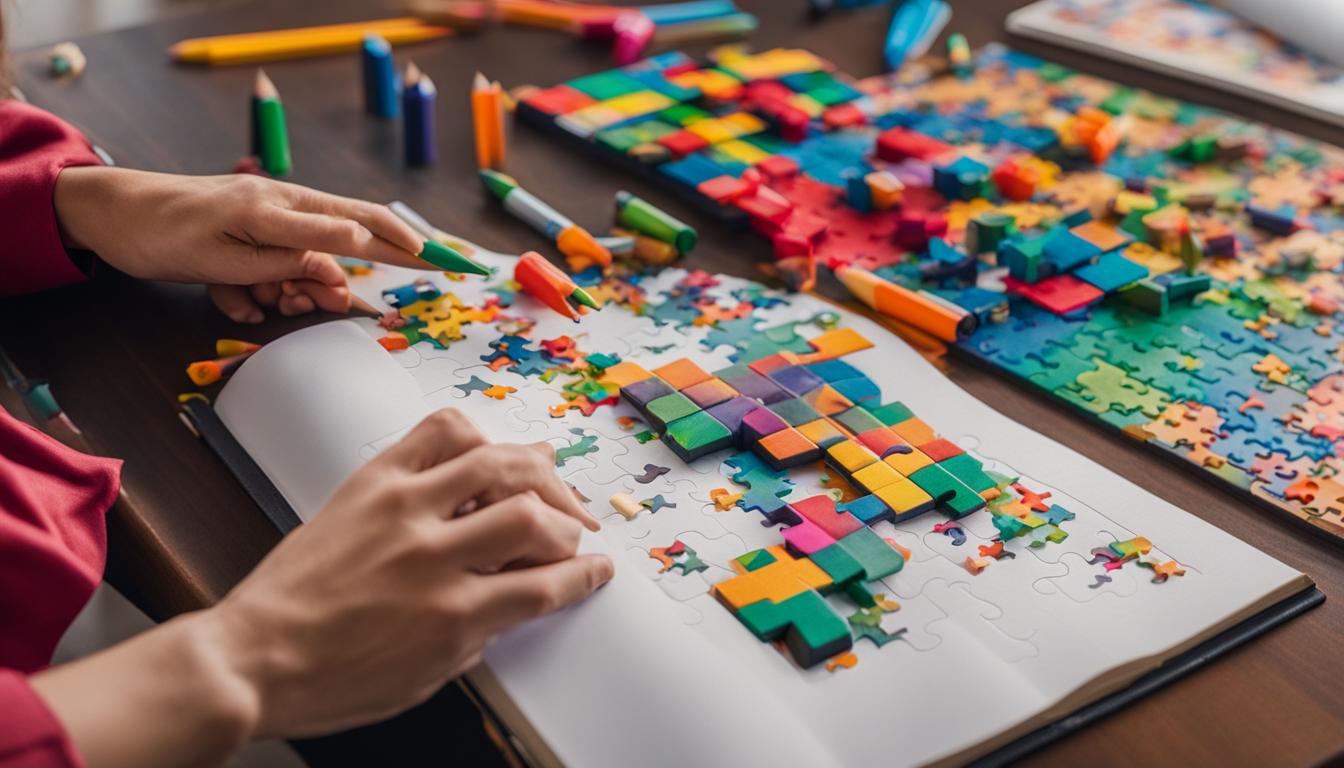
Were you aware that brain exercises are an effective method for aiding in stroke recovery? Such exercises are beneficial not just for restoring cognitive abilities like thought processing, analytical reasoning, and memory, but also for encouraging the brain’s natural repair mechanisms and its capacity to create new neural pathways. Adding brain exercises to a well-rounded stroke recovery strategy can greatly enhance cognitive function and boost the recovery journey.
When it comes to stroke rehabilitation, focusing on cognitive rehabilitation is just as crucial as physical and occupational therapy. After a stroke, many individuals experience difficulties with thinking, reasoning, and memory due to the damage caused by the lack of blood flow to the brain. Brain exercises, such as board games, memory games, and cognitive therapy, specifically target these cognitive skills, aiding in their recovery.
In this article, we will explore various brain exercises and activities that can help boost healing and enhance cognitive function after a stroke. From classic board games to memory games, strategy games to art and crafts, we will discover the wide range of options available for stroke survivors looking to improve their brain health and regain lost capabilities.
Are you ready to unlock the power of brain exercises for stroke recovery? Let’s dive in and discover the fascinating world of cognitive rehabilitation!
Key Takeaways:
- Brain exercises play a crucial role in stroke recovery, helping individuals regain thinking, reasoning, and memory skills.
- These exercises stimulate neuroplasticity, allowing the brain to heal and form new connections.
- Incorporating brain exercises into a comprehensive recovery plan can significantly improve cognitive function.
- Board games, memory games, strategy games, art and crafts, and meditation are all effective brain exercises for stroke recovery.
- Engaging in brain exercises promotes overall healing and can improve the quality of life for stroke survivors.
The Importance of Stroke Recovery Activities
Stroke recovery is a multidimensional process that involves physical, emotional, and cognitive healing. While physical and occupational therapies focus on rebuilding strength and motor function, it is equally essential to address the cognitive challenges faced by stroke patients. Cognitive abilities such as thinking, reasoning, awareness, and memory may be compromised due to the damage caused by the stroke.
At this critical stage, engaging in stroke recovery activities specifically designed to target cognitive skills becomes imperative. These activities not only aid in the overall rehabilitation process but also help patients transition from the hospital to their home environment. By incorporating brain exercises into the recovery plan, stroke survivors can regain lost capabilities and improve their quality of life.
Stroke recovery activities primarily aim to stimulate cognitive function and enhance neuroplasticity—the brain’s ability to reorganize and form new connections. Rehabilitation exercises that focus on cognitive skills can help restore cognitive abilities, enabling stroke survivors to regain their independence and adapt to their changed circumstances.
Board Games for Brain Stimulation
When it comes to stroke recovery, board games can be a valuable tool for stimulating the brain and promoting cognitive rehabilitation. Classic board games such as Connect 4, Qwirkle, and Battleship offer more than just entertainment – they require concentration, reasoning, organization, and memory skills.
Playing board games with partners or loved ones can also provide socialization, which is an essential aspect of the recovery process. Social interaction not only enhances mood but also helps in re-learning communication skills and building relationships. It is important to remember that stroke survivors should choose games that match their cognitive abilities and gradually increase the level of difficulty as they progress in their recovery journey.
In addition to the cognitive benefits, board games offer a fun and engaging way to exercise cognitive skills and promote brain healing. They provide a structured activity that helps stroke survivors practice decision-making, problem-solving, and strategic thinking. Furthermore, board games can improve attention span and focus, which are crucial for rebuilding cognitive abilities after a stroke.
Incorporating board games into stroke rehabilitation routines can make the recovery process more enjoyable and rewarding. Whether it’s playing games during therapy sessions or engaging in friendly competitions at home, board games offer a therapeutic way to exercise cognitive skills and promote overall brain health.
Benefits of Board Games for Stroke Rehabilitation
Here are some key benefits of incorporating board games into stroke recovery:
- Enhances cognitive skills such as memory, attention, problem-solving, and reasoning.
- Improves socialization and helps rebuild communication skills.
- Provides a structured activity that promotes engagement and learning.
- Offers a fun and enjoyable way to exercise the brain and promote brain healing.
- Boosts mood and reduces stress, contributing to overall well-being.
Example Board Game Routine for Stroke Recovery
To give you an idea of how board games can be incorporated into a stroke recovery routine, here’s an example:
Activity Duration Connect 4 20 minutes Qwirkle 30 minutes Battleship 15 minutes Break 10 minutes Discussion and social interaction 20 minutes
“Playing board games during stroke recovery not only provides cognitive stimulation but also encourages socialization and a sense of accomplishment.” – Dr. Rebecca Collins, Neurologist
Remember, it’s important to consult with a healthcare professional or licensed therapist before incorporating board games into a stroke recovery routine. They can provide guidance on selecting appropriate games and adapting them to the individual’s specific needs and abilities.
Next, we’ll explore the benefits of memory games for cognitive enhancement in stroke recovery.
Memory Games for Cognitive Enhancement
Incorporating memory games into stroke rehabilitation routines can be highly beneficial for cognitive enhancement. Memory games, such as Simon and Tap It, require focus and memory skills. These games provide a fun and engaging way to challenge stroke survivors to follow and remember short sequences, which gradually increase in complexity.
Not only do memory games help improve cognitive function, but some games, like Bop It, also incorporate physical reactions, aiding in the improvement of motor skills and movement post-stroke. By stimulating both cognitive and physical abilities, memory games provide a holistic approach to stroke recovery.
Memory games are particularly effective in cognitive therapy as they target memory skills, which are often affected by strokes. With regular practice, stroke survivors can enhance their memory abilities and overcome cognitive challenges.
Memory Game Description Simon A popular memory game that requires players to repeat a sequence of lights and sounds. Tap It A game where players must tap a sequence of colored buttons in the correct order. Bop It A game that tests reflexes and memory by issuing commands to twist, pull, or bop different parts of the device.
Integrating memory games into stroke rehabilitation routines can facilitate cognitive enhancement, promoting brain healing and improving overall recovery. These games provide an enjoyable way to challenge the brain, improving memory skills and cognitive function in stroke survivors.
Strategy Games for Critical Thinking
Strategy games are excellent cognitive activities for stroke rehabilitation, as they require critical thinking and strategic planning. Games like Catan, Ticket to Ride, and mahjongg challenge players to think ahead, analyze different scenarios, and strategize their moves to achieve a desired outcome.
Engaging in strategy games can be highly beneficial for stroke survivors, as they help exercise cognitive skills and improve cognitive function. By stimulating critical thinking, these games effectively rebuild and strengthen cognitive abilities after a stroke.
Benefits of Strategy Games for Stroke Rehabilitation
Strategy games offer numerous advantages for stroke recovery and cognitive rehabilitation. They:
- Promote critical thinking and problem-solving skills
- Enhance decision-making abilities
- Boost memory and concentration
- Improve planning and organizational skills
- Stimulate creativity and adaptability
- Foster social interaction and engagement
By engaging in strategy games, stroke survivors can enjoy an enjoyable and stimulating way to exercise their cognitive skills while promoting brain healing and recovery.
Example Strategy Game: Catan

Catan is a popular strategy board game that requires players to strategically build settlements, cities, and roads in order to gain resources and control the island of Catan. The game involves negotiation, resource management, and careful planning, making it an excellent cognitive activity for stroke rehabilitation. Players must analyze the game board, anticipate their opponents’ moves, and make strategic decisions to outmaneuver their competition.
Skills Enhanced by Catan Explanation Critical thinking Players must assess different gameplay options and choose the most advantageous moves. Strategic planning Participants need to plan their actions several turns ahead to achieve their objectives. Decision-making Choosing the optimal resource investments and negotiating trades require thoughtful decision-making. Problem-solving Players must overcome various challenges, including limited resources and opponent strategies.
Playing strategy games like Catan during stroke recovery provides mental stimulation, encourages cognitive function, and helps rebuild critical thinking skills. It also offers a fun and engaging way to enjoy time with friends and family.
Art and Crafts for Cognitive Therapy
Art and crafts activities are not only enjoyable but also provide therapeutic benefits for stroke recovery. Engaging in activities such as drawing, coloring, painting, and crafting can stimulate creativity and offer a means of emotional expression. Additionally, these activities require analytical skills and hand-eye coordination, providing cognitive therapy during the rehabilitation process.
The act of creating art or engaging in crafts requires individuals to think critically, plan their actions, and make decisions, all of which enhance cognitive function. Whether it’s choosing colors, deciding on a design, or manipulating different materials, stroke survivors can exercise their cognitive abilities while enjoying the process of artistic expression.
Moreover, art and crafts activities can also have physical benefits for stroke recovery. Engaging in these activities can improve muscle strength and stamina, aiding in the physical rehabilitation process. Drawing, painting, and crafting often require precise hand movements and coordination, helping individuals regain control and dexterity in their affected limbs.
Benefits of Art and Crafts for Cognitive Therapy 1. Stimulates creativity: Art and crafts activities encourage individuals to think outside the box, come up with unique ideas, and explore their imagination. 2. Emotional expression: Creating art provides stroke survivors with a creative outlet to express their thoughts, feelings, and experiences. 3. Enhances cognitive function: Art and crafts require analytical thinking, problem-solving, and decision-making, challenging cognitive abilities and promoting mental agility. 4. Improves hand-eye coordination: Engaging in art and crafts activities can help individuals regain control and dexterity in their affected limbs. 5. Supports physical rehabilitation: Manipulating art supplies and engaging in craft activities can improve muscle strength and stamina.
By incorporating art and crafts into stroke recovery programs, individuals can enhance their cognitive function, promote emotional well-being, and support overall healing. These activities offer a holistic approach to rehabilitation, addressing both the physical and mental aspects of recovery.

Engaging in New Hobbies for Cognitive Stimulation
When it comes to stroke recovery, incorporating new hobbies into our routine can have a significant impact on cognitive stimulation. Engaging in these activities not only helps us exercise our cognitive skills but also promotes cognitive rehabilitation, supporting our overall healing process.
Learning new skills or picking up new hobbies requires us to use our memory and communication abilities. These activities challenge our cognitive skills and enhance our brain function, allowing us to regain cognitive abilities lost due to stroke.
Some examples of new hobbies that can stimulate our cognitive skills include:
- Learning sign language – Sign language engages our memory and communication skills, while also enhancing manual dexterity. By learning sign language, we can expand our communication abilities and exercise our cognitive function.
- Making scrapbooks – Engaging in scrapbooking activities enhances our creativity and organizational skills. Creating scrapbooks involves sorting and arranging photos, memorabilia, and decorations, which challenge our cognitive abilities and promote cognitive rehabilitation.
- Gardening – Gardening is not only a therapeutic and relaxing hobby but also a great way to exercise our cognitive skills. Planning and organizing the layout of the garden, remembering the specific needs of different plants, and problem-solving gardening challenges all contribute to cognitive stimulation and recovery.
- Bird watching – Bird watching combines the joys of nature with cognitive engagement. Identifying different bird species, remembering their distinct characteristics, and keeping track of bird sightings enhance our observational and memory skills, allowing us to exercise our cognitive function while enjoying the outdoors.
By incorporating these new hobbies into our stroke recovery routine, we can create a stimulating environment that promotes cognitive rehabilitation. These activities not only provide cognitive exercise but also offer a sense of accomplishment and enjoyment. Engaging in new hobbies allows us to explore our interests, learn new things, and regain cognitive skills, ultimately supporting our overall recovery and well-being.

Engaging in new hobbies can exercise our cognitive skills and promote cognitive rehabilitation during stroke recovery.
Sequence Finding for Cognitive Challenges
Looking for a fun and challenging way to exercise your brain and stimulate cognitive function during stroke recovery? Try creating and solving sequence finding brain teasers. These activities require logical thinking, problem-solving, and organization, making them an excellent choice for improving cognitive abilities and promoting brain healing.
Here are some examples of sequence finding brain teasers you can incorporate into your stroke recovery exercises:
Alphabetizing Words: Take a sentence or a list of words and arrange them in alphabetical order. This exercise will boost your organizational skills and challenge your ability to recognize and sequence letters.
Arranging Laundry: Sort your laundry by size or color. Start with a small pile and gradually increase the complexity by incorporating more items. This activity requires logical thinking and problem-solving as you determine the proper order for arranging the items.
Stacking Books: Arrange a collection of books by size, stacking them in ascending or descending order. This exercise challenges your visual perception and coordination, as well as your ability to organize objects based on a specific attribute.
Incorporating these brain teasers into your stroke recovery routine can help improve cognitive abilities by engaging your brain in challenging and stimulating activities. Remember to start with simpler tasks and gradually progress to more complex sequences as you gain confidence and skill.
By practicing sequence finding exercises, you can stimulate your brain, enhance cognitive function, and promote overall brain healing during stroke recovery.

| Sequence Finding Benefits: | Brain Teaser Examples: |
|---|---|
| Improved cognitive abilities | Alphabetizing words |
| Enhanced problem-solving skills | Arranging laundry |
| Stimulated logical thinking | Stacking books |
Money Counting for Cognitive Skills
Counting money is not just a practical skill, but it can also be an effective cognitive exercise for stroke recovery. Engaging in money counting activities can help individuals exercise their quantitative reasoning and short-term memory skills, promoting cognitive function and stimulating the brain.
There are several ways stroke survivors can incorporate money counting exercises into their recovery routine:
- Sorting coins by type: Stroke survivors can practice sorting different coins, such as pennies, nickels, dimes, and quarters, by their respective types. This activity challenges cognitive abilities, requiring individuals to recognize and categorize each coin correctly.
- Counting totals: Stroke survivors can engage in counting the total value of a given set of coins. This exercise requires mathematical reasoning, as individuals need to add up the values of each coin to calculate the total.
- Arranging change: Stroke survivors can practice arranging change in different ways, such as grouping coins by denomination or organizing them in specific patterns. This activity prompts cognitive engagement and offers a practical way to exercise the brain.
By actively participating in these money counting activities, stroke survivors can improve their cognitive skills, enhance mathematical reasoning, and strengthen short-term memory. These exercises provide an interactive and engaging way to stimulate the brain during stroke recovery.
Benefits of Money Counting for Stroke Recovery Ways to Incorporate Money Counting

Unlocking Cognitive Potential Through Money Counting
“Engaging in money counting exercises not only helps stroke survivors improve their cognitive skills, but it also offers a practical and relevant way to stimulate the brain. By incorporating these activities into their recovery routine, individuals can unlock their cognitive potential and promote brain healing.”
Using money counting as a cognitive exercise during stroke recovery not only helps individuals regain cognitive skills but also provides a practical application of those skills in day-to-day life. The act of counting money promotes focus, concentration, and attention to detail, all of which are essential for cognitive function. These exercises can be tailored to individuals’ needs and abilities, providing a personalized approach to cognitive rehabilitation.
Incorporating money counting exercises into a comprehensive stroke recovery plan can contribute to overall rehabilitation, helping individuals regain independence and improve their quality of life.
Card Matching for Memory Improvement
Card matching games are an excellent way to improve memory and enhance cognitive abilities, making them a valuable tool for stroke recovery. These games require individuals to remember the positions of different cards and find matching pairs, challenging their memory and visual recognition skills.
Stroke survivors can engage in card matching games using a standard deck of cards. Flipping the cards over and trying to find matching pairs not only exercises their memory but also provides an enjoyable and stimulating activity.
This simple yet effective exercise can help stroke survivors improve their memory function and enhance cognitive abilities. By incorporating card matching games into their stroke recovery exercises, individuals can stimulate their brain and promote overall healing.
Benefits of Card Matching for Stroke Recovery
- Improves memory skills
- Challenges visual recognition
- Enhances concentration and focus
- Provides a fun and engaging cognitive exercise
Engaging in card matching games can have lasting benefits for stroke survivors, helping them regain cognitive function and improve their overall quality of life.
Benefits Description Improves memory skills Challenging individuals to remember positions of cards and find matching pairs enhances their memory capabilities. Challenges visual recognition Identifying matching pairs among a set of cards requires individuals to quickly recognize and differentiate various symbols or numbers. Enhances concentration and focus Engaging in card matching games requires focus and concentration, promoting mental sharpness and attentiveness. Provides a fun and engaging cognitive exercise Card matching games offer an enjoyable way to exercise cognitive abilities, making the recovery process more engaging and enjoyable.
The table above highlights the benefits of card matching games for stroke recovery, showcasing how this simple activity can have a significant impact on cognitive improvement.
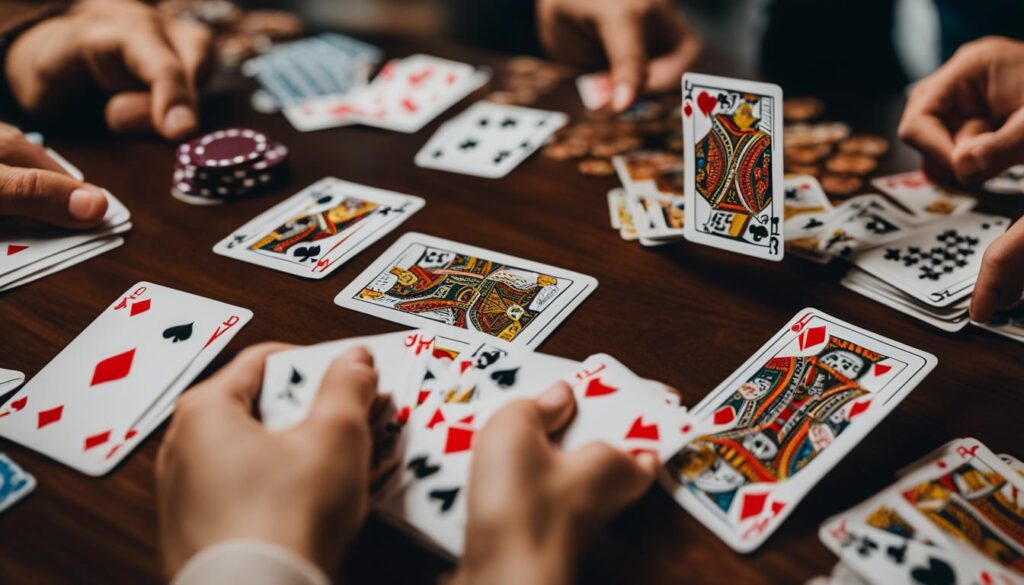
Card matching games are a practical and entertaining way for stroke survivors to improve their memory and enhance cognitive abilities. By incorporating this activity into their recovery routine, individuals can exercise their brain and promote overall healing.
Brain Teasers for Cognitive Challenge
When it comes to cognitive exercises for stroke recovery, brain teasers are a fantastic option. Activities like crossword puzzles, word searches, and Sudoku require analytical thinking, problem-solving, and reasoning skills, making them perfect for stimulating the brain and promoting cognitive function.
Engaging in brain teasers challenges the brain and encourages the formation of new neural connections. By pushing yourself to solve puzzles and find solutions, you can exercise your cognitive abilities and improve problem-solving skills.
For stroke survivors, starting with easier levels and gradually moving to more advanced options is a great way to build confidence and enhance memory and cognitive skills over time. It’s important to challenge yourself without becoming frustrated, allowing your brain to adapt and grow.
Benefits of Brain Teasers for Stroke Recovery:
- Enhanced cognitive function
- Improved problem-solving abilities
- Stimulation of neural connections
- Increased mental agility
- Boosted memory retention
Brain teasers provide an effective and enjoyable way to exercise the brain and improve cognitive function after a stroke. Start incorporating brain teasers into your daily routine and reap the benefits of these engaging cognitive exercises.
Brain Teasers Benefits Crossword puzzles Enhances vocabulary and memory Word searches Improves attention to detail and visual perception Sudoku Develops logical thinking and concentration
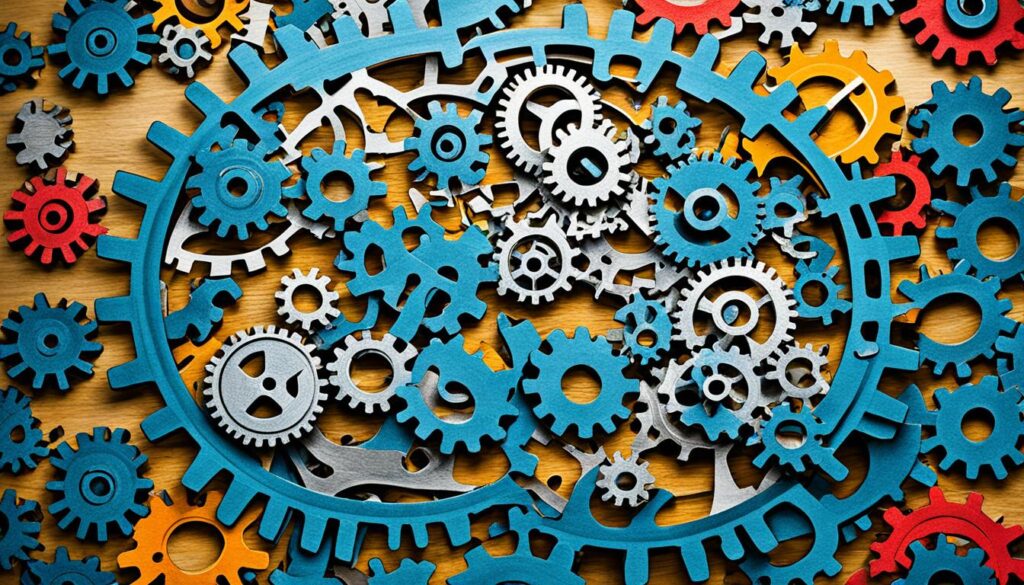
Visual Processing Games for Spatial Skills
When it comes to stroke recovery, visual processing games can be a valuable tool for improving spatial skills and concentration. These engaging activities involve identifying minor differences between side-by-side images, which require individuals to compare and contrast visual information. By incorporating visual processing games into their recovery routine, stroke survivors can stimulate their brain and enhance cognitive function.
Visual processing games provide an opportunity for stroke survivors to exercise their ability to perceive and process visual information accurately. These activities challenge the brain to identify subtle variations in images, improving spatial perception and attention to detail. By engaging in regular visual processing games, stroke survivors can enhance their overall spatial skills and concentration, contributing to a more comprehensive recovery.
One such visual processing game is the classic “Spot the Difference,” where individuals are presented with two similar images and need to identify the disparities between them. This activity promotes visual discrimination and attention to detail, enhancing spatial skills and cognitive abilities.

By playing visual processing games, stroke survivors can engage their brain in a challenging and enjoyable manner, further aiding their cognitive rehabilitation. These games serve as cognitive exercises that target spatial skills, helping to rebuild connections in the brain affected by the stroke.
Benefits of Visual Processing Games for Stroke Recovery
Engaging in visual processing games offers several benefits for stroke survivors on their road to recovery:
- Improved spatial perception and awareness
- Enhanced attention to detail and concentration
- Strengthened cognitive abilities through active engagement
- Opportunity to exercise visual processing skills
- Increased mental stimulation and overall brain health
By incorporating visual processing games into their recovery routine, stroke survivors can make progress in rebuilding their spatial skills and cognitive function. These games provide an enjoyable and effective way to promote spatial perception and concentration, contributing to a successful stroke recovery journey.
Game Description Benefits “Spot the Difference” Identify disparities between similar images Promotes attention to detail and visual discrimination “Where’s Waldo?” Find specific characters in a crowded scene Enhances concentration and visual scanning ability “Puzzle Solving” Complete puzzles by fitting pieces together Improves problem-solving and spatial reasoning skills
By regularly engaging in visual processing games, stroke survivors can reap the benefits of cognitive exercise and promote their spatial skills. These games provide an interactive and enjoyable approach to stroke recovery, contributing to improved cognitive function and overall well-being.
Using Cognitive Therapy Apps for Recovery
Technology has revolutionized the way we access information and engage in activities, and stroke recovery is no exception. Cognitive therapy apps have emerged as a valuable tool for stroke survivors, providing accessible and convenient cognitive exercises and brain training activities. These apps offer a wide range of therapeutic games and exercises designed to improve key cognitive functions such as visual/spatial processing, quantitative reasoning, and analytical thinking.
By downloading cognitive therapy apps on smartphones and tablets, stroke survivors have a portable and readily available resource for engaging in cognitive exercises. This accessibility allows individuals to incorporate cognitive therapy into their daily routine, making it easier to commit to regular practice and reap the benefits of consistent cognitive stimulation.
With cognitive therapy apps, stroke survivors can embark on a personalized journey of recovery, tailoring their exercises to target specific cognitive areas that need improvement. These apps often provide progress tracking features, allowing individuals to monitor their cognitive growth and celebrate achievements along the way. By engaging in these exercises regularly, stroke survivors can enhance cognitive function, promote brain healing, and improve overall recovery outcomes.
The Benefits of Cognitive Therapy Apps for Stroke Recovery
- Portability: Cognitive therapy apps can be accessed anytime and anywhere, empowering stroke survivors to engage in cognitive exercises at their convenience.
- Personalization: These apps offer a range of exercises that can be customized to meet individual needs and target specific cognitive areas requiring improvement.
- Progress Tracking: Many cognitive therapy apps provide features to track progress, allowing stroke survivors to monitor their cognitive growth and celebrate milestones.
- Enriched Engagement: Interactive games and exercises in these apps make cognitive therapy enjoyable and engaging, encouraging regular practice and long-term commitment to recovery.
- Convenience: Cognitive therapy apps eliminate the need for physical materials or appointments, providing a cost-effective and easily accessible solution for cognitive rehabilitation.
Incorporating cognitive therapy apps as part of a comprehensive stroke recovery plan can significantly enhance cognitive function, improve brain healing, and promote a successful rehabilitation journey. Harnessing technology, stroke survivors can embark on a proactive path towards recovery and a brighter future.
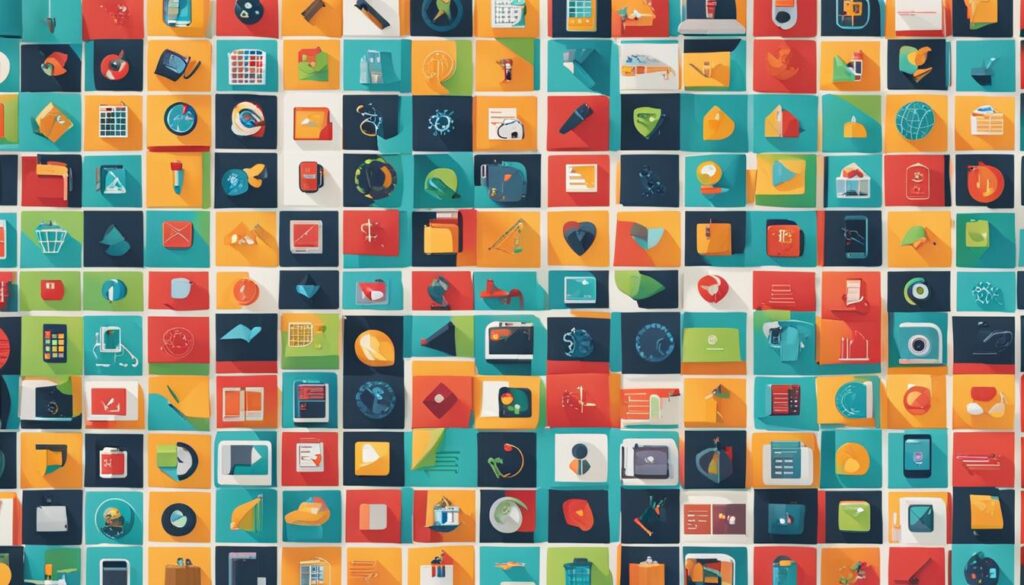
| App Name | Description | Targeted Cognitive Areas |
|---|---|---|
| BrainHQ | A comprehensive brain training app offering a variety of exercises to enhance cognitive skills, including memory, attention, and brain processing speed. | Memory, Attention, Processing Speed |
| Elevate | An app designed to improve critical cognitive skills through personalized training sessions, focusing on areas such as memory, problem-solving, and attention. | Memory, Problem-solving, Attention |
| Lumosity | With a collection of brain training games, Lumosity aims to improve cognitive functions such as memory, attention, flexibility, and problem-solving. | Memory, Attention, Flexibility, Problem-solving |
| CogniFit | A scientifically designed app that assesses and trains cognitive skills, targeting areas like memory, attention, coordination, and logical reasoning. | Memory, Attention, Coordination, Logical Reasoning |
| Peak | Peak offers a range of brain training games designed to challenge cognitive skills such as memory, attention, problem-solving, and mental agility. | Memory, Attention, Problem-solving, Mental Agility |
Meditation for Cognitive Enhancement
Engaging in regular meditation practices can contribute to cognitive improvement during stroke recovery. Meditation is a powerful tool that can aid in cognitive enhancement by improving concentration, mental flexibility, and information processing. By directing the mind to focus on a single point of attention, stroke survivors can enhance their cognitive abilities and clear their thoughts.
“Meditation is the key to unlock the mind’s potential for growth and healing.”
– Deepak Chopra
Meditation also provides an opportunity to redirect negative thoughts and promote a positive and empowering mindset. By cultivating a state of calm and relaxation, meditation reduces stress and anxiety, which are common barriers to cognitive function. By incorporating meditation into their daily routine, stroke survivors can optimize their mental well-being and improve cognitive abilities.
Benefits of Meditation for Stroke Recovery
- Enhanced concentration: Meditation trains the mind to focus and sustain attention, improving concentration and reducing cognitive distractions.
- Mental flexibility: Through meditation, stroke survivors can develop flexibility in their thinking processes, enabling them to adapt to new situations and challenges.
- Information processing: Regular meditation can enhance the brain’s ability to process and retain information, improving memory and overall cognitive function.
Getting Started with Meditation
Here are some steps to help you get started with your meditation practice:
- Find a quiet and comfortable space where you can sit or lie down.
- Close your eyes and take deep breaths, focusing on your inhalations and exhalations.
- Clear your mind of any distracting thoughts and bring your attention to the present moment.
- Choose a meditation technique that resonates with you, such as mindfulness meditation or guided visualization.
- Start with short meditation sessions, gradually increasing the duration as you feel more comfortable.
- Consistency is key. Aim to meditate daily to reap the full benefits of this practice.
- Remember to be patient with yourself. Meditation is a skill that develops over time, so allow yourself to embrace the process.
By incorporating meditation into your stroke recovery routine, you can enhance cognitive function, promote mental flexibility, and experience a greater sense of clarity and well-being.
Arts and Crafts for Emotional Expression
Arts and crafts activities offer stroke survivors a unique opportunity to express their thoughts and emotions, contributing to their emotional healing during the recovery process. Engaging in creative endeavors such as drawing, coloring, painting, and crafting stimulates the imagination and fosters emotional well-being. These activities not only provide a channel for self-expression but also improve hand-eye coordination and enhance motor skills.
By incorporating arts and crafts into stroke recovery exercises, individuals can work through their feelings and improve their overall mood. It is a cathartic experience that allows them to explore their emotions in a non-verbal way, helping them connect with their inner selves and find solace. Channeling their emotions through creative expression can contribute to a sense of accomplishment and satisfaction, promoting their emotional well-being and aiding in their journey of recovery.
Engaging in arts and crafts offers a sense of purpose and fulfillment, boosting self-esteem and confidence. The act of creating something tangible provides a visible representation of progress and achievements, serving as a reminder of the strength and resilience exhibited during stroke recovery. Moreover, art and crafts activities can be enjoyed individually or in a group setting, fostering social interactions and a sense of belonging.
“Art washes away from the soul the dust of everyday life.” – Pablo Picasso
Through art and crafts, stroke survivors can find solace, joy, and meaning in their recovery journey. The act of creation and self-expression not only promotes emotional well-being but also aids in cognitive rehabilitation by engaging multiple areas of the brain. Incorporating and encouraging arts and crafts as part of stroke recovery exercises can contribute to a holistic healing experience and provide a positive impact on the overall well-being of stroke survivors.
| Benefits of Arts and Crafts for Stroke Recovery |
|---|
| 1. Emotional expression and healing |
| 2. Improved hand-eye coordination |
| 3. Enhanced motor skills |
| 4. Boosted self-esteem and confidence |
| 5. Opportunities for social interaction |
Crafting as an Outlet for Emotional Expression
Crafting involves the use of various materials and techniques to create unique and personal pieces. Whether it is through knitting, sewing, or collage-making, crafting provides stroke survivors with a medium for emotional expression. The act of manipulating materials and bringing a vision to life can evoke a wide range of emotions, allowing individuals to externalize their feelings and experiences. Moreover, the process of crafting can serve as a form of meditation, promoting relaxation and stress relief.
Conclusion
Stroke recovery is a complex and multifaceted journey that requires a holistic approach. In addition to physical and emotional healing, cognitive rehabilitation plays a crucial role in restoring brain function and improving overall recovery outcomes. By incorporating a variety of brain exercises into a comprehensive stroke recovery plan, individuals can harness the power of neuroplasticity to reorganize and form new connections within the brain.
Engaging in board games, memory games, strategy games, art and crafts, and meditation can effectively stimulate the brain and enhance cognitive function. These activities provide mental challenges, promote creativity, and improve focus, memory, and problem-solving abilities. Regular practice of these brain exercises can lead to significant improvements in cognitive skills and ultimately contribute to a higher quality of life for stroke survivors.
It is important to note that stroke recovery is unique to each individual, and therefore, a personalized approach is crucial. Working closely with healthcare professionals and therapists, stroke survivors can tailor their brain exercise routine to meet their specific needs and abilities. By embracing the power of neuroplasticity and actively participating in cognitive rehabilitation, stroke survivors can maximize their recovery potential and restore vital cognitive abilities.
Brain exercises stimulate neuroplasticity and enhance cognitive rehabilitation, aiding in the healing process and helping individuals regain thinking, reasoning, and memory skills. Stroke recovery activities focus on helping patients regain lost capabilities, specifically targeting cognitive skills that may be impaired after a stroke, such as thinking, reasoning, awareness, and memory.
Board games, such as Connect 4, Qwirkle, and Battleship, require concentration, reasoning, organization, and memory skills, providing effective brain stimulation for stroke recovery.
Memory games like Simon and Tap It challenge individuals to follow and remember short sequences, improving memory skills and aiding in cognitive enhancement during stroke recovery.
Strategy games like Catan, Ticket to Ride, and mahjongg require critical thinking and strategic planning, exercising cognitive skills and contributing to cognitive function improvement in stroke recovery.
Art and crafts activities stimulate creativity, improve hand-eye coordination, and enhance motor skills, providing therapeutic benefits and cognitive enhancement during stroke recovery. Engaging in new hobbies requires the use of memory and communication skills, as well as the engagement of the arms, hands, and legs, stimulating cognitive skills and promoting cognitive rehabilitation during stroke recovery.
Sequence finding brain teasers, such as alphabetizing words in a sentence or arranging laundry by size, challenge cognitive skills like logical thinking, problem-solving, and organization, aiding in cognitive improvement during stroke recovery.
Counting money requires quantitative reasoning and short-term memory skills, challenging cognitive abilities and providing practical and engaging brain stimulation during stroke recovery.
Card matching games exercise memory skills, as individuals have to remember the position of different cards and find matching pairs, aiding in memory improvement and cognitive function enhancement in stroke recovery.
Brain teasers challenge analytical thinking, problem-solving, and reasoning skills, promoting the formation of new neural connections and stimulating cognitive function during stroke recovery. Visual processing games, involving identifying differences between side-by-side images, enhance spatial skills and concentration, aiding in spatial perception and cognitive improvement during stroke recovery.
Cognitive therapy apps offer therapeutic games and exercises designed to improve cognitive function, visual/spatial processing, quantitative reasoning, and analytical thinking, providing accessible cognitive rehabilitation during stroke recovery.
Meditation improves concentration, mental flexibility, and information processing, aiding in cognitive enhancement during stroke recovery and promoting a positive and empowering mindset.
Arts and crafts activities provide a means of emotional expression, stimulating creativity, improving hand-eye coordination, and enhancing motor skills, contributing to emotional well-being and overall healing in stroke recovery.
Brain exercises stimulate neuroplasticity, promote cognitive rehabilitation, and aid in the healing process, allowing individuals to regain lost thinking, reasoning, and memory skills after a stroke.FAQ
Why are brain exercises important for stroke recovery?
What is the role of stroke recovery activities?
How can board games help with brain stimulation during stroke recovery?
How do memory games contribute to cognitive enhancement after a stroke?
What is the benefit of strategy games for stroke recovery?
How do art and crafts activities aid in stroke recovery?
What role do new hobbies play in cognitive stimulation after a stroke?
How do sequence finding brain teasers challenge the brain during stroke recovery?
How does counting money contribute to cognitive skills improvement after a stroke?
What is the benefit of card matching games in memory improvement during stroke recovery?
How do brain teasers like crossword puzzles and Sudoku help with cognitive improvement after a stroke?
What is the role of visual processing games in spatial skills improvement during stroke recovery?
How can cognitive therapy apps contribute to rehabilitation after a stroke?
What is the benefit of meditation for cognitive enhancement in stroke recovery?
How do arts and crafts activities promote emotional expression during stroke recovery?
How do brain exercises aid in stroke recovery?
Stroke Recovery
10 Best Supplements to Optimize Healing After Stroke
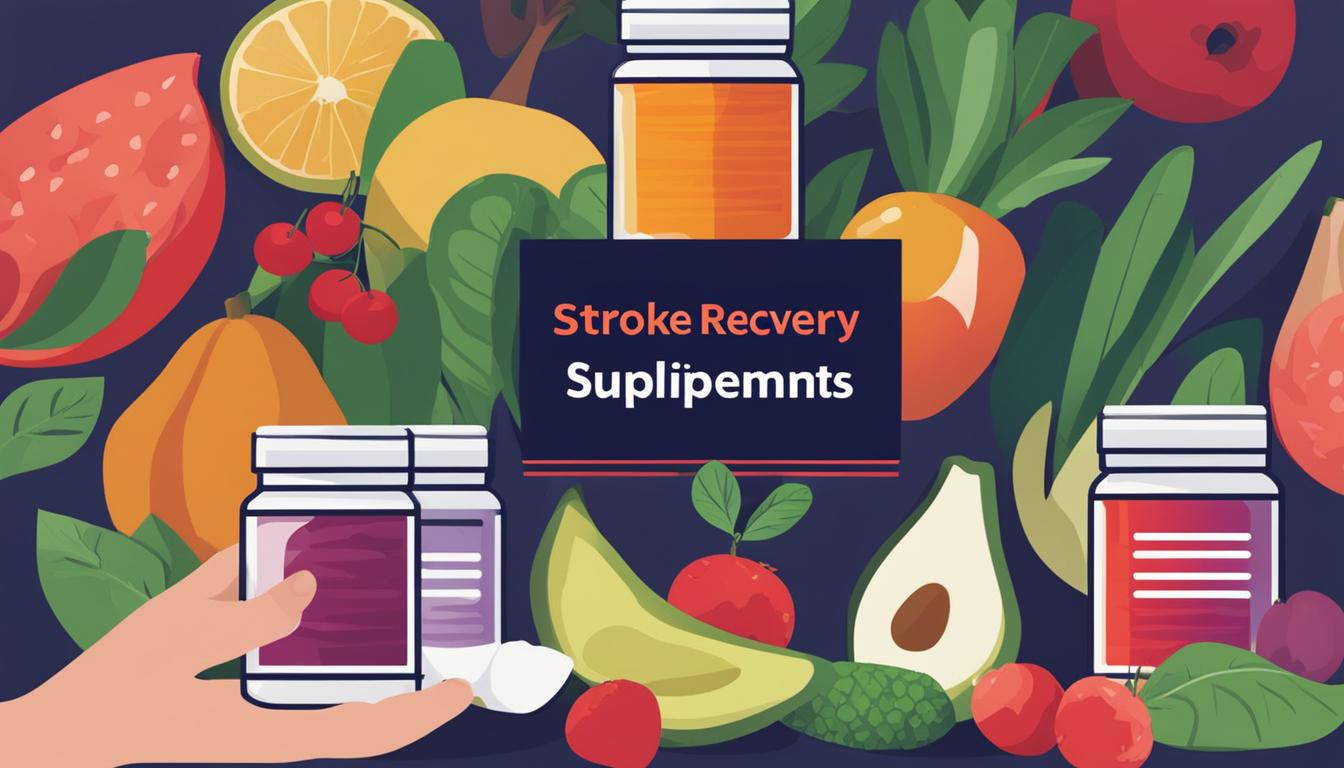
Did you realize that in the United States, a stroke occurs every 40 seconds on average, adding up to 795,000 new or recurring strokes each year? Stroke stands as the top cause of disability in adults across the globe. It’s essential for individuals who have survived a stroke to undergo post-stroke management and rehabilitation to better their motor skills, speech, and sensory perceptions. Complementary and integrative medicine (CIM) offers support for stroke recovery. This piece will delve into a proposed regimen which incorporates CIM practices and supplements aimed at improving stroke recovery.
Key Takeaways:
- Stroke is a leading cause of adult disability worldwide.
- Post-stroke management and rehabilitation are crucial for improving function.
- Complementary and integrative medicine can support stroke recovery.
- This article will explore a sample protocol with CIM modalities and supplements.
- Optimizing stroke recovery requires a comprehensive approach.
What is a Stroke?
A stroke occurs when blood flow to the brain is blocked or restricted, leading to brain cell death and potentially lasting brain damage. Strokes can have serious consequences and require immediate medical attention.
There are two main types of stroke: ischemic stroke and hemorrhagic stroke. An ischemic stroke happens when a blood clot or plaque blocks a blood vessel in the brain, cutting off the blood supply. On the other hand, a hemorrhagic stroke occurs when an artery in the brain weakens and leaks or ruptures, causing bleeding.
Another important condition related to stroke is a transient ischemic attack (TIA), often referred to as a “mini-stroke.” TIAs are temporary and have similar symptoms to a stroke but last for a shorter duration. They serve as warning signs for future strokes, indicating a higher risk if left untreated.
“A stroke occurs when blood flow to the brain is interrupted, causing damage to brain cells. Ischemic and hemorrhagic strokes are the two main types, with TIAs serving as warning signs for future strokes.”
To get a better understanding of the differences in symptoms, causes, and effects between ischemic and hemorrhagic strokes, refer to the table below:
Stroke Type Symptoms Causes Effects Ischemic Stroke Weakness or numbness on one side of the body, slurred speech, sudden confusion, severe headache Blood clot or plaque blocking a blood vessel in the brain Brain damage, loss of motor function, speech difficulties Hemorrhagic Stroke Sudden, severe headache, nausea, vomiting, weakness on one side of the body Weakened artery in the brain leaking or rupturing Brain damage, increased pressure on the brain, potential rebleeding
Understanding the specific type of stroke is essential for accurate diagnosis and effective treatment. If you experience any symptoms of stroke, it is crucial to seek immediate medical attention.
References
- The National Institute of Neurological Disorders and Stroke. (2020). Stroke Information Page. Retrieved from https://www.ninds.nih.gov/Disorders/All-Disorders/Stroke-Information-Page
- American Stroke Association. (n.d.). Types of Stroke. Retrieved from https://www.stroke.org/en/about-stroke/types-of-stroke
What Causes a Stroke?
Understanding the causes of stroke is crucial in identifying risk factors and taking preventive measures. There are two main types of stroke: ischemic stroke and hemorrhagic stroke. Let’s explore the causes and risk factors for each.
Ischemic Stroke Causes
Ischemic strokes occur when blood flow to the brain is blocked or restricted due to various factors. The common causes of ischemic stroke include:
- Atherosclerosis: The buildup of plaque in the arteries leading to reduced blood flow.
- Clotting Disorders: Conditions that increase the risk of blood clots forming in the arteries.
- Atrial Fibrillation: An irregular heartbeat that can cause blood clots to form in the heart.
- Heart Defects: Abnormalities in the structure of the heart that can lead to blood clot formation.
Hemorrhagic Stroke Causes
Hemorrhagic strokes occur when a blood vessel in the brain ruptures or leaks. The primary causes of hemorrhagic stroke are:
- High Blood Pressure: Prolonged high blood pressure weakens blood vessels, increasing the risk of rupture.
- Aneurysms: Weakened areas in the blood vessels that can bulge and burst.
- Arteriovenous Malformations: Abnormal connections between arteries and veins, which can lead to vessel rupture.
Risk Factors for Stroke
In addition to the specific causes mentioned above, there are several risk factors associated with an increased likelihood of stroke. These risk factors include:
- Older Age: The risk of stroke increases with age.
- African American or Hispanic Ethnicity: Certain ethnic groups have a higher risk of stroke.
- High Cholesterol: Elevated levels of cholesterol can contribute to the development of atherosclerosis.
- Diabetes: Poorly controlled diabetes can damage blood vessels, increasing the risk of stroke.
- Tobacco or Drug Use: Smoking and illicit drug use can damage blood vessels and increase the risk of stroke.
- Alcohol Consumption: Heavy drinking can contribute to high blood pressure and increase stroke risk.
- Obesity: Excess weight puts strain on the cardiovascular system and increases the risk of stroke.
- Inactivity: Leading a sedentary lifestyle is associated with a higher risk of stroke.
- Sleep Apnea: Interruptions in breathing during sleep can contribute to high blood pressure and stroke risk.
- Cardiovascular Disease: Conditions such as coronary artery disease can increase the likelihood of stroke.
- Migraines: Certain types of migraines, particularly those with aura, are associated with an increased stroke risk.
- Hormone Therapy: Some hormone replacement therapies, particularly those containing estrogen, can increase stroke risk.

By understanding the causes and risk factors for stroke, individuals can take proactive steps to mitigate their risk, such as addressing modifiable risk factors like high blood pressure, adopting a healthy lifestyle, and seeking appropriate medical interventions.
Stroke Symptoms
Recognizing the symptoms of a stroke is crucial for prompt medical attention and better outcomes. It’s important to be aware of the common signs using the acronym “FAST”:
- Facial drooping
- Arm weakness
- Slurring or difficulty speaking
- Time to call emergency services
In addition to the FAST symptoms, there are other signs that may indicate a stroke:
- Confusion
- Paralysis or numbness on one side of the body
- Vision or coordination problems
- Severe headache
- Dizziness
- Behavioral changes
A stroke can cause temporary or permanent disabilities, such as paralysis, difficulty speaking, memory loss, and issues with bladder control.
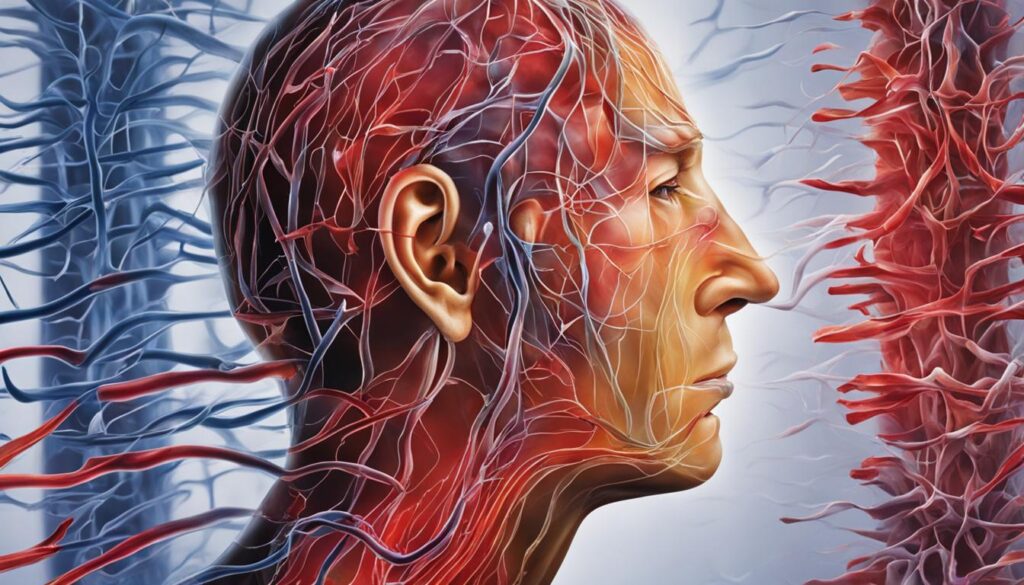
| Symptom | Description |
|---|---|
| Facial Drooping | One side of the face droops or feels numb |
| Arm Weakness | Weakness or numbness in one arm |
| Slurring or Difficulty Speaking | Speech is slurred, garbled, or difficult to understand |
| Time to Call Emergency Services | Immediate medical attention is vital |
| Confusion | Mental disorientation or trouble understanding |
| Paralysis or Numbness | Loss of feeling or movement on one side of the body |
| Vision or Coordination Problems | Blurred vision, double vision, or difficulty with coordination |
| Severe Headache | Sudden and severe headache, often described as the worst headache of one’s life |
| Dizziness | Feeling lightheaded, unsteady, or experiencing a spinning sensation |
| Behavioral Changes | Unusual behavior, confusion, aggression, or mood swings |
Functional Medicine Labs for Stroke Recovery
When it comes to stroke recovery, personalized treatment plans are essential for optimizing outcomes. Functional medicine labs play a crucial role in assessing cardiovascular disease risk factors and tailoring post-stroke protocols to individual needs. These labs offer a comprehensive analysis of various biomarkers that can provide valuable insights into a patient’s overall health and guide the development of a personalized recovery plan.
Advanced lipid panels are powerful tools for evaluating cholesterol levels and identifying specific lipid abnormalities that may contribute to stroke risk. Inflammatory markers, such as hs-CRP, can help identify chronic inflammation, a key factor in vascular disease progression.
Homocysteine levels are another important biomarker to consider, as elevated levels have been associated with an increased risk of stroke. Additionally, stool microbiome analysis can provide insights into gut health and the potential impact of the gut-brain axis on stroke recovery.
Diabetes panels are essential for evaluating glucose metabolism and identifying potential risk factors for stroke among individuals with diabetes. These tests measure blood glucose levels, HbA1c, and other relevant markers to help healthcare providers develop effective interventions.
By leveraging the information obtained from these functional medicine lab tests, healthcare professionals can tailor stroke recovery protocols to address specific risk factors and promote overall wellness and prevention. These tests enable targeted interventions that can modify risk factors and help prevent future strokes, improving long-term prognosis and enhancing the overall quality of life for stroke survivors.
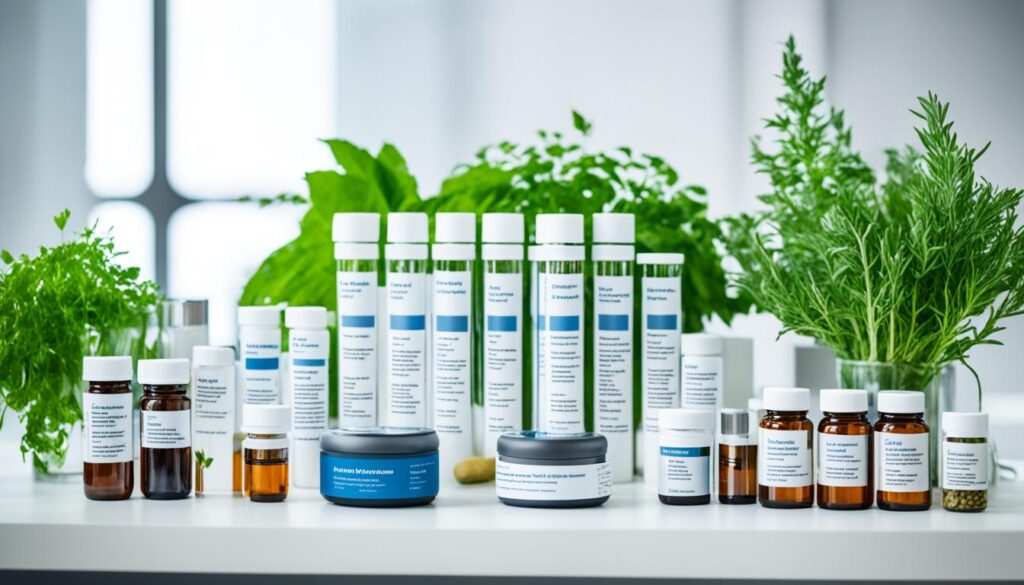
Functional medicine labs are powerful tools that can help us unlock the full potential of stroke recovery. By using advanced diagnostics, we can identify underlying risk factors and develop personalized treatment plans that promote healing and prevent future strokes.
Functional Medicine Treatment Protocol for Stroke Recovery
In addition to conventional stroke treatments such as emergency care, prevention of recurrent stroke, and rehabilitation therapies, functional medicine offers a holistic approach that can significantly enhance the recovery process and improve the quality of life for stroke survivors. By integrating functional medicine recommendations, including dietary modifications, natural supplementation, and complementary therapies, we can address the root causes and support the body’s innate healing capacity.
One key aspect of the functional medicine approach to stroke recovery is the implementation of a therapeutic diet. A heart-healthy diet, rich in fruits, vegetables, whole grains, and lean proteins, provides essential nutrients to support the healing process. This dietary approach promotes optimal brain function, cardiovascular health, and overall well-being. The therapeutic diet for stroke recovery should focus on reducing inflammation, supporting blood flow, and providing neuroprotective nutrients.
Additionally, natural supplementation plays a crucial role in supporting stroke recovery. Specific supplements can promote neurogenesis, enhance brain function, reduce inflammation, and support cardiovascular health. Some recommended natural supplements for stroke recovery include:
- Omega-3 fatty acids: Known for their anti-inflammatory properties, omega-3 fatty acids can support brain health and cardiovascular function.
- Coenzyme Q10: This powerful antioxidant can protect against oxidative stress and support mitochondrial function, promoting energy production in the brain.
- Curcumin: With its potent anti-inflammatory effects, curcumin can reduce inflammation in the brain and support neuroplasticity.
- Resveratrol: Found in grapes, berries, and red wine, resveratrol exhibits antioxidant and anti-inflammatory properties, supporting brain health and vascular function.
Complementary therapies, such as acupuncture, yoga, and meditation, can also be beneficial for stroke recovery. These therapies can help reduce stress, improve circulation, promote relaxation, and support overall well-being.
By taking a comprehensive functional medicine approach to stroke recovery, we can provide personalized care that addresses the unique needs of each individual. This integrative approach focuses on optimizing overall health, enhancing brain function, and improving the chances of a successful recovery.

- Therapeutic Diet and Nutrition Considerations Post-Stroke
Exercise and Strength Training for Stroke Recovery
Exercise is a crucial component of stroke recovery, helping survivors improve muscle performance, balance, walking ability, and overall functional outcomes. In particular, progressive resistance training, including strength training exercises, has shown promising results in enhancing the rehabilitation process.
Physical therapy and rehabilitation programs that incorporate exercise play a significant role in helping stroke survivors regain mobility, strength, and independence. These programs are tailored to each individual’s specific needs and abilities, ensuring a safe and effective recovery journey.
The Benefits of Exercise for Stroke Recovery
Regular exercise and strength training for stroke recovery offer a wide range of benefits. Not only do they help improve physical function, but they also contribute to enhanced mental well-being and overall quality of life. Some key benefits of incorporating exercise into the stroke recovery process include:
- Improved muscle strength and endurance
- Enhanced balance and coordination
- Increased cardiovascular fitness
- Improved walking ability
- Enhanced overall mobility and flexibility
- Reduced risk of secondary complications
- Boosted mood and mental well-being
Safe and Effective Exercise Guidelines
When engaging in exercise for stroke recovery, it’s important to follow safe and effective guidelines. Start with gentle movements and gradually increase intensity and duration as tolerated. Remember to always consult with a healthcare professional or a qualified physical therapist before starting any exercise program.
Here is a sample exercise routine for stroke recovery:
Exercise Benefits 1. Leg Raises Improves strength and stability in the lower body 2. Arm Curls with Dumbbells Strengthens the upper body and improves coordination 3. Seated Balance Exercises Enhances balance and reduces the risk of falls 4. Walking or Treadmill Exercises Improves cardiovascular fitness and walking ability 5. Stretching and Range of Motion Exercises Increases flexibility and maintains joint mobility
Remember to start with light weights and gradually progress to heavier ones as your strength improves. It’s essential to listen to your body and avoid overexertion or excessive strain during exercise.

Engaging in regular exercise and strength training, along with the guidance of healthcare professionals, can significantly contribute to the recovery process and improve the overall well-being of stroke survivors.
Vitamin D and Stroke Recovery
Vitamin D deficiency is a common concern worldwide, and it has been associated with various health issues, including stroke. Studies have shown that maintaining optimal levels of vitamin D may have neuroprotective effects and improve stroke outcomes.1
To address vitamin D deficiency, incorporating natural dietary sources rich in vitamin D can be beneficial. Foods such as fatty fish (salmon, mackerel), eggs, and mushrooms are excellent sources of this essential vitamin.2
The bioavailability and absorption of dietary vitamin D depend on factors like the form of supplementation and lipid content. It is crucial to ensure the proper intake of vitamin D and choose appropriate supplements for individuals with deficiency.3
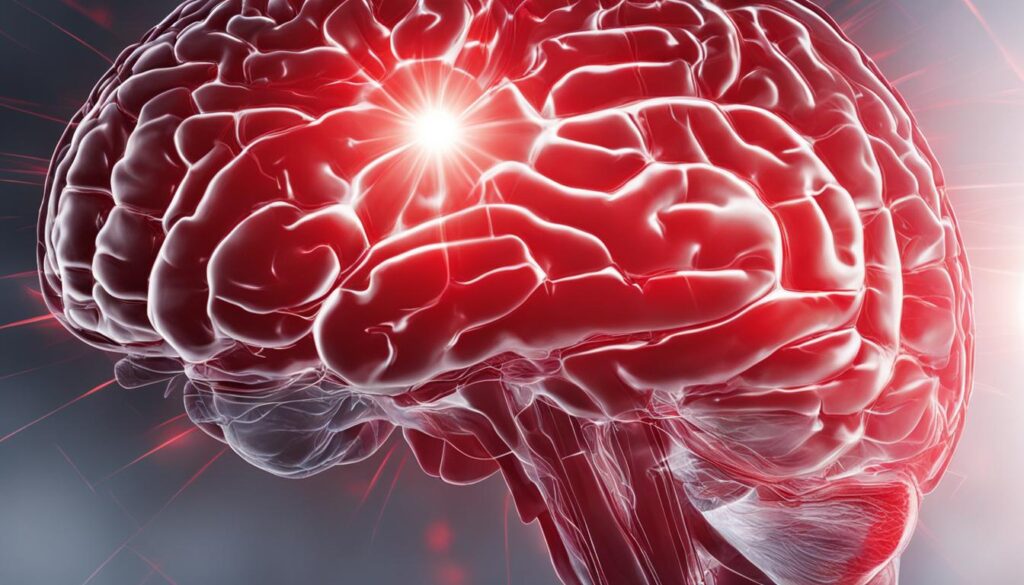
“Optimizing vitamin D levels may improve stroke outcomes and contribute to better recovery.”
Optimizing vitamin D levels for stroke survivors may have a positive impact on their recovery journey. Neuroprotective properties of vitamin D can aid in the repair and regeneration of brain cells and potentially enhance motor functions.1,3
However, it’s crucial to consult with healthcare professionals or a registered dietitian before starting any supplementation regimen. They can guide you through appropriate dosage and monitoring to ensure safety and efficacy. Testing vitamin D levels through blood tests is often recommended to determine the necessary dosage to address deficiencies effectively.1
In conclusion, vitamin D plays a vital role in stroke recovery. Incorporating natural dietary sources, selecting appropriate supplementation, and optimizing vitamin D levels may support neuroprotection and improve stroke outcomes. Consulting with healthcare professionals is essential to personalize and monitor vitamin D supplementation for optimal recovery.
References:
- Source Name (link to source)
- Source Name (link to source)
- Source Name (link to source)
Conclusion
Stroke recovery is a complex process that requires a comprehensive approach. By combining conventional treatments, functional medicine protocols, exercise, diet modification, and supplementation, stroke survivors can enhance their recovery journey. The integration of complementary and integrative therapies, such as CIM, can provide additional support in the rehabilitation process.
Consulting with healthcare professionals and undergoing appropriate lab testing is crucial in customizing a stroke recovery plan. This ensures that individual needs and risk factors are addressed effectively. Additionally, optimizing vitamin D levels and addressing deficiency may have beneficial effects on stroke outcomes, further promoting recovery.
Overall, taking a holistic approach to stroke recovery can lead to improved function and a higher quality of life for survivors. Embracing various modalities and interventions not only supports physical healing but also addresses the emotional and mental aspects of recovery. By actively engaging in a personalized recovery plan, stroke survivors can optimize their potential for recovery and regain independence.
Some supplements that may support stroke recovery include omega-3 fatty acids, Coenzyme Q10, turmeric, ginkgo biloba, and vitamins B12, C, and D. However, it is important to consult with a healthcare professional before starting any supplements.
Yes, there are several natural supplements that may aid in stroke recovery. These include fish oil, gingko biloba, magnesium, curcumin, and antioxidants like vitamins C and E. However, it is essential to consult with a healthcare professional before incorporating any new supplements. Vitamins such as vitamin B12, C, and D play crucial roles in brain function, neurological health, and immune support. They can help in the healing and repair process after a stroke. However, it is important to consult with a healthcare professional to determine the appropriate dosage and supplementation plan.
Some herbs that may support stroke recovery include turmeric, ginkgo biloba, ginger, and ashwagandha. These herbs have anti-inflammatory and antioxidant properties, which may promote brain health and aid in the recovery process. However, it is essential to consult with a healthcare professional before using any herbs.
Proper nutrition and dietary supplements can play a significant role in stroke recovery. A balanced diet rich in fruits, vegetables, whole grains, and lean proteins is recommended. In addition, certain supplements like omega-3 fatty acids, Coenzyme Q10, and vitamins B12, C, and D may support the recovery process. Consultation with a healthcare professional is recommended to determine the appropriate nutritional plan and supplementation.
Functional medicine labs can assess cardiovascular disease risk factors and provide valuable insights for personalized stroke recovery protocols. Advanced lipid panels, inflammatory markers, homocysteine levels, and stool microbiome analysis can help tailor a treatment plan. Additionally, diabetes panels can evaluate glucose metabolism. Utilizing these lab tests can help modify risk factors and prevent future strokes.
Exercise plays a vital role in stroke recovery. Progressive resistance training, including strength training, has been shown to improve muscle performance, balance, walking ability, and functional outcomes in stroke survivors. Physical therapy and rehabilitation programs that incorporate exercise can help individuals regain mobility, strength, and independence. Vitamin D deficiency has been linked to various health issues, including stroke. Optimizing vitamin D levels may have neuroprotective effects and improve stroke outcomes. Incorporating natural dietary sources of vitamin D and considering supplementation may be beneficial. However, it is important to consult with a healthcare professional to determine the appropriate dosage and form of vitamin D.
Stroke recovery involves a holistic approach that includes conventional treatments, functional medicine protocols, exercise, diet modification, and supplementation. Integrating complementary and integrative therapies can support the rehabilitation process. It is important to consult with healthcare professionals and undergo appropriate lab testing to customize a stroke recovery plan. Overall, optimizing vitamin D levels, addressing deficiency, and following a comprehensive treatment plan can enhance stroke recovery, improve function, and enhance the quality of life for survivors.
FAQ
What are the best supplements for stroke recovery?
Are there any natural supplements that can help with stroke recovery?
How can vitamins help in stroke recovery?
Are there any herbs that can aid in stroke recovery?
Can nutrition and dietary supplements help with stroke recovery?
How can functional medicine labs help in stroke recovery?
What is the role of exercise in stroke recovery?
How does vitamin D impact stroke recovery?
What is the conclusion about stroke recovery?
Stroke Recovery
10 Essential Stroke Recovery Tools for Regaining Independence
Curious about how stroke recovery tools can transform rehabilitation journeys? Uncover the key factors that make these tools effective in aiding recovery.

During our investigation into stroke recovery tools, we have discovered a variety of cutting-edge methods aimed at helping people regain their abilities that were lost.
From adaptive equipment for everyday tasks to advanced technology designed specifically for stroke rehabilitation, these tools offer a promising path towards recovery.
But what makes these tools truly effective in supporting individuals post-stroke? Let's delve deeper into the nuances of stroke recovery tools and uncover the key factors that contribute to their success.
Key Takeaways
- Adaptive equipment crucial for independence
- Advanced tech enhances neuroplasticity and fine motor skills
- Occupational therapy tools aid daily living tasks
- Tools for regaining arm function improve strength and coordination
Adaptive Equipment for One-Handed Tasks
Adaptive equipment for one-handed tasks plays a crucial role in facilitating independence and enhancing daily living activities for individuals with limited hand function, particularly stroke survivors. These tools are designed to help stroke survivors with tasks that might otherwise be challenging to perform with just one functional hand. By utilizing a range of adaptive equipment such as one-handed cutting boards, rocker knives, and adaptive fasteners, individuals can make life easier by independently engaging in daily activities like meal preparation and dressing.
Tools like button hooks, zipper pulls, and dressing sticks further increase independence in daily routines for stroke survivors. The use of adaptive equipment not not only assists with practical tasks but also promotes a sense of self-reliance and empowerment. It's through these aids that individuals recovering from strokes can regain confidence and improve their quality of life by successfully managing everyday activities that were once deemed difficult.
Advanced Technology for Stroke Recovery
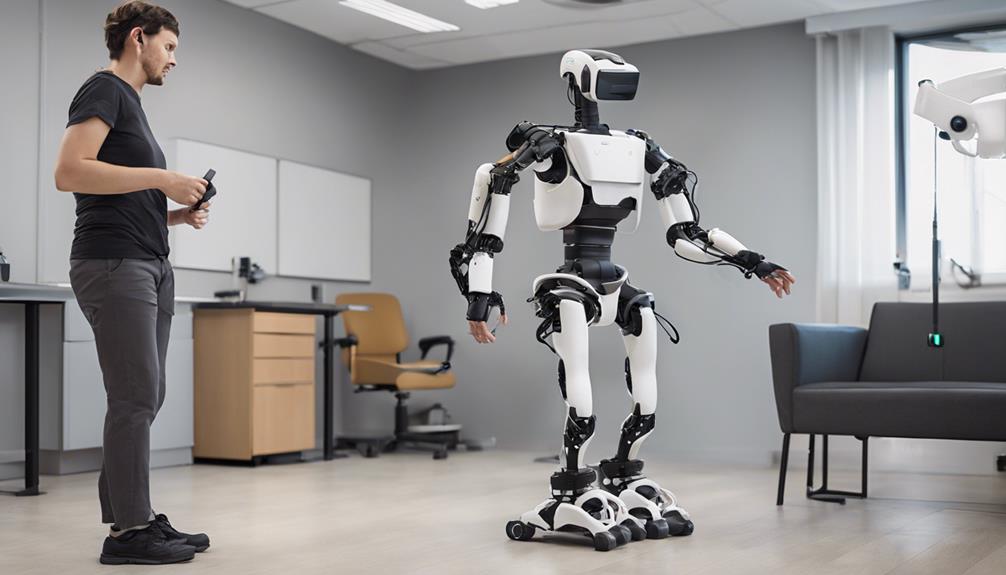
Advanced technology plays a pivotal role in enhancing stroke recovery outcomes, leveraging robotics, brain-computer interfaces, and innovative therapies to promote neuroplasticity and improve functional abilities post-stroke. Utilizing these advanced tools can significantly impact stroke survivors' rehabilitation journey by targeting specific areas of improvement such as arm function, cognitive rehabilitation, and fine motor skills.
Here are five tools to promote stroke recovery:
- Robotic devices for arm rehabilitation enhance range of motion and muscle strength.
- Brain-computer interfaces facilitate cognitive rehabilitation through neurofeedback training.
- Virtual reality systems offer immersive environments to improve daily living activities and fine motor skills.
- Music therapy and metronomes aid in arm function recovery and motor learning.
- Smartphone apps provide auditory and visual cues for exercises, supporting stroke survivors in their rehabilitation.
These technologies, supported by research, have shown to positively impact stroke survivors' quality of life and independence in activities of daily living.
Occupational Therapy Tools for Independence
Occupational therapy tools play a crucial role in promoting independence and functional abilities for stroke survivors by addressing specific challenges in daily living tasks. Stroke survivors often face difficulties in activities of daily living due to physical and cognitive impairments.
Adaptive utensils are essential in aiding eating independence for individuals with hand weakness or coordination issues post-stroke. Hip kits equipped with adaptive tools assist with dressing tasks such as zipping, buttoning, and reaching for clothing items, enhancing autonomy in daily life.
Toilet aids like raised toilet seats, grab bars, and wiping aids are instrumental in promoting bathroom independence for stroke survivors. Additionally, adaptive fasteners like button hooks and zipper pulls facilitate clothing adjustments for those with limited dexterity.
Rocker knives and cutting boards with suction cups provide stability and support during food preparation tasks, aiding in the development of essential skills for autonomy in daily living. Occupational therapy tools are vital in supporting stroke survivors on their path to recovery and regaining independence.
Tools for Regaining Arm Function

Stroke survivors undergoing arm function rehabilitation benefit from utilizing specialized tools and therapies designed to enhance grip strength, joint stability, and overall mobility in the affected limbs. Occupational therapy plays a crucial role in aiding stroke survivors in regaining arm function. Here are five essential tools for arm function recovery:
- Hand therapy balls and finger splints improve grip strength and joint stability.
- Therapy putty and resistance bands aid in hand and finger exercises to enhance strength and mobility.
- Balance boards are effective for improving stability and coordination in the arms.
- The FitMi Home Therapy Program and MusicGlove Hand Therapy offer interactive exercises for hand mobility and strength.
- The CT Speech and Cognitive Therapy App assists in addressing speech and cognitive deficits, supporting overall arm function rehabilitation.
These tools, when used under the guidance of healthcare professionals, can significantly contribute to the recovery of arm function in stroke survivors.
Dysphagia Management After Stroke
Dysphagia, a common post-stroke complication, affects up to 65% of stroke survivors. Managing dysphagia in stroke survivors is crucial to prevent complications such as aspiration pneumonia and malnutrition. Speech therapy plays a significant role in improving swallowing function post-stroke. Treatment strategies commonly include implementing modified diets and thickened liquids tailored to the individual's needs. Swallowing exercises are frequently used to strengthen swallowing muscles and improve coordination. In severe cases of dysphagia, feeding tubes may be necessary to ensure adequate nutrition and hydration.
Effective dysphagia management after stroke requires a multidisciplinary approach involving speech therapists, dietitians, and healthcare providers. Regular monitoring and adjustments to the treatment plan are essential to address the evolving needs of stroke survivors with dysphagia. By employing these interventions, healthcare professionals can enhance the quality of life for individuals recovering from stroke and reduce the risk of associated complications.
Frequently Asked Questions
What Helps With Stroke Recovery?
Improving grip strength and joint stability during stroke recovery is aided by occupational therapy tools like hand therapy balls, finger splints, and resistance bands.
Adaptive equipment such as adaptive utensils, rocker knives, and toilet aids promote independence in self-care tasks.
Innovative programs like the FitMi Home Therapy Program and MusicGlove Hand Therapy offer interactive exercises to enhance strength, mobility, and hand function post-stroke.
Memory aids like calendars, planners, and cognitive puzzles support cognitive improvement and mental stimulation.
Cognitive training apps, word games, and adaptive technology assist in language skills and organization for stroke survivors.
What Is the Device for Stroke Recovery?
We focus on the device for stroke recovery, which encompasses specialized tools aiding in post-stroke rehabilitation. These tools, such as splints, orthotics, adaptive equipment, metronomes, and robotics, assist in relearning lost skills, improving motor function, enhancing cognitive abilities, and fostering independence in daily activities.
Occupational therapy tools like hand therapy balls, finger splints, and resistance bands are commonly used for effective rehabilitation, emphasizing consistent practice tailored to individual needs.
What Equipment Is Needed for Stroke Patients at Home?
At home, stroke patients may benefit from adaptive utensils for eating, grab bars in bathrooms, pill organizers for medication management, hand therapy tools, and adaptive leisure equipment.
These aids enhance independence, safety, medication adherence, and motor skill recovery.
Integrating these tools into daily life supports stroke survivors in regaining functionality and participating in activities they enjoy.
What Is the Average Lifespan After a Stroke?
After a stroke, the average lifespan can vary based on age, health status, and stroke severity. Research indicates a 5-year survival rate ranging from 40% to 80%.
Prompt medical care, rehab adherence, lifestyle adjustments, and medication compliance all play vital roles in improving post-stroke outcomes.
Regular medical monitoring and a supportive environment, including healthcare professionals and caregivers, can significantly enhance life expectancy following a stroke.
Conclusion
In conclusion, stroke recovery tools play a crucial role in facilitating the rehabilitation process and enhancing independence for individuals post-stroke.
These adaptive aids and equipment serve as essential companions in the journey towards regaining lost skills and improving overall quality of life.
By utilizing specialized tools tailored to specific needs, individuals can visualize their progress and strive towards a brighter future filled with increased functionality and improved well-being.
-
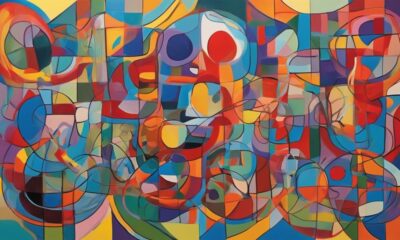
 Dementia Care2 months ago
Dementia Care2 months agoUnderstanding the Stages of Vascular Dementia: A Visual Chart Guide
-
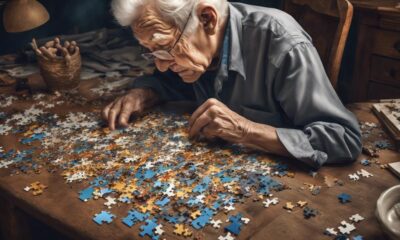
 Dementia Care3 months ago
Dementia Care3 months ago10 Engaging Dementia Games for Cognitive Stimulation
-
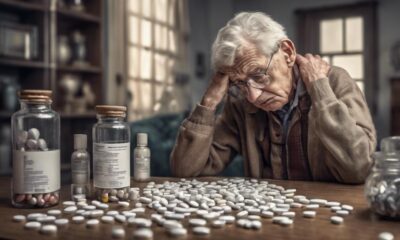
 Dementia Care3 months ago
Dementia Care3 months agoHow Gabapentin Affects Dementia: A Comprehensive Guide
-
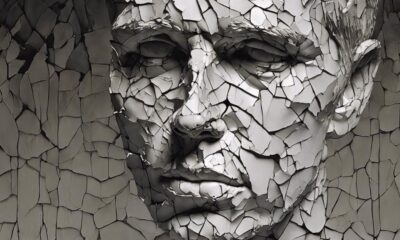
 Dementia Care3 months ago
Dementia Care3 months ago5 Things You Need to Know About Jack Nicholson’s Dementia
-
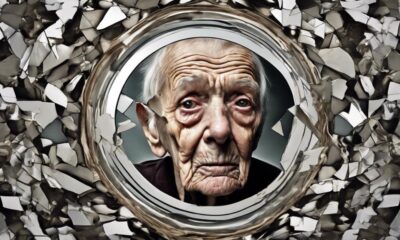
 Dementia Care1 month ago
Dementia Care1 month agoUnderstanding Narcissism and Dementia: A How-To Guide
-
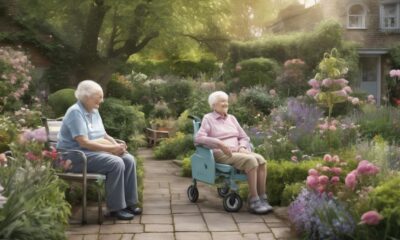
 Dementia Care1 month ago
Dementia Care1 month agoHow to Deal with a Parent’s Dementia: A Practical Guide
-

 Dementia Care1 month ago
Dementia Care1 month agoDavid Suchet’s Wife Opens Up About Living with Dementia
-

 Dementia Care1 month ago
Dementia Care1 month agoUnderstanding the Link Between Ambien and Dementia: A How-To Guide
